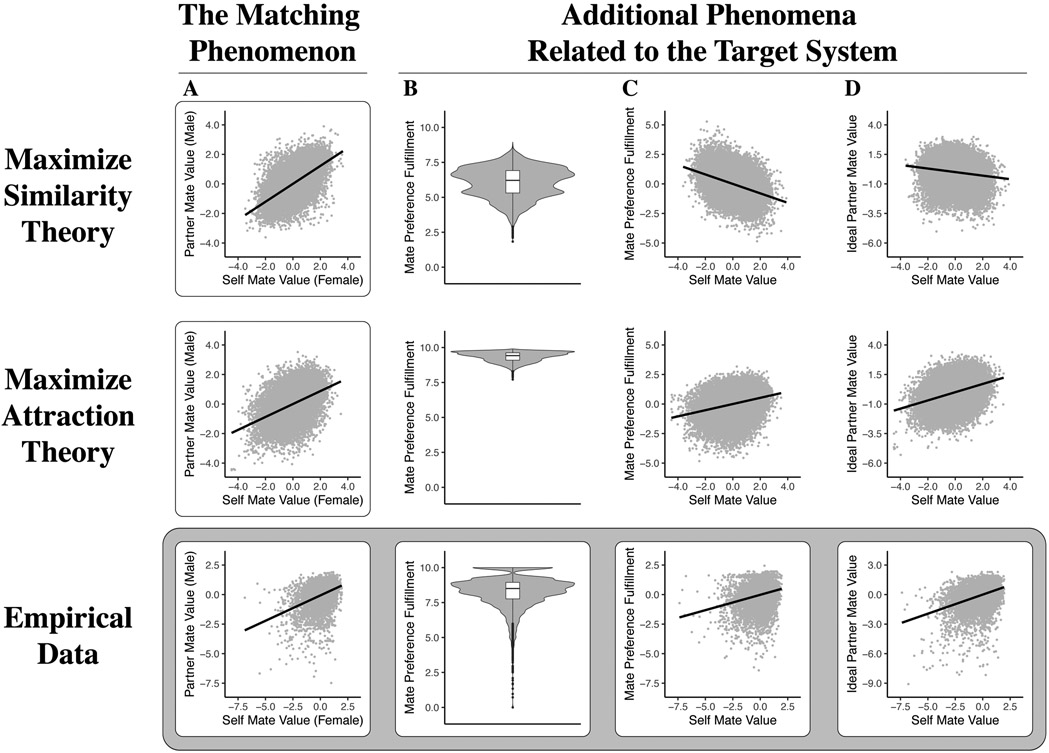Figure 3:
A comparison between data models based on empirical data and the data models implied by two theories of mate selection: the Maximize Similarity Theory and Maximize Attraction Theory (for further information about these empirical data, see Conroy-Beam et al. (2019)). We compared theory-implied and empirical data models relating to four phenomena: (A) the association between an individual’s mate value and that of their partner (i.e., the matching phenomenon), (B) the distribution of mate preference fulfillment, where preference fulfillment is scaled from 0 (no fulfillment) to 10 (complete fulfillment), (C) the association between an individual’s (or agent’s) mate value and their mate preference fulfillment, and (D) the association between an individual’s mate value and their ideal partner value. For all associations, the data were standardized within samples (i.e., individual countries in the empirical data; distinct iterations of the model simulations in the formal theories). The Maximize Similarity Theory accounts for the matching phenomenon (A), but fails to produce each of the other phenomena observed in the empirical data (B-D). In contrast, the Maximize Attraction theory accounts well for each of the phenomena, though it does appear to overestimate the level of mate preference fulfillment we should expect to see in the empirical data.

